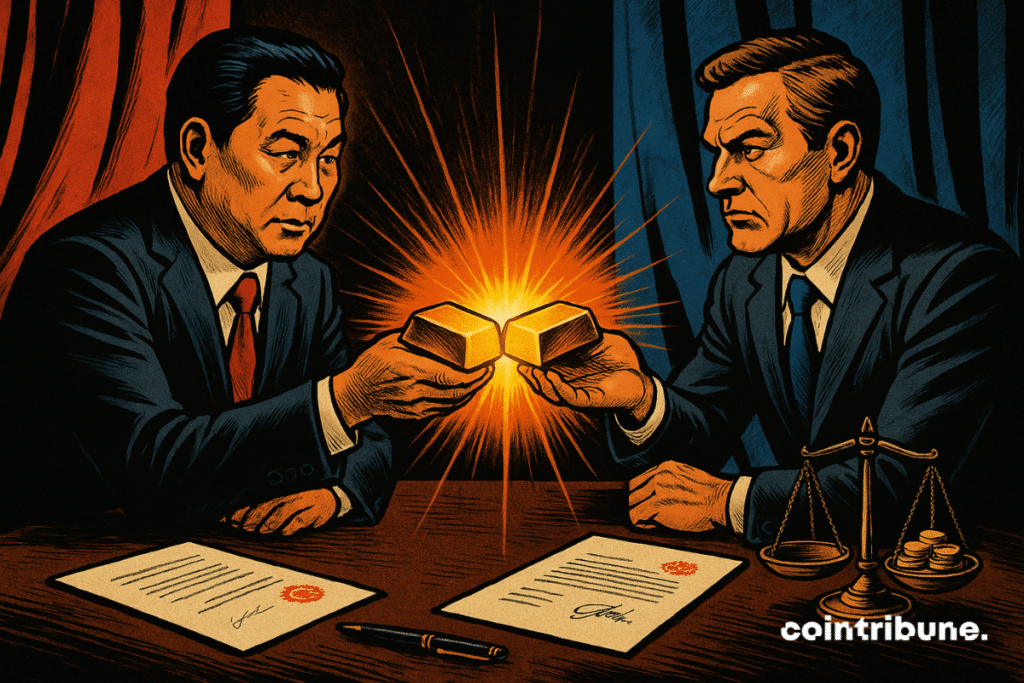Beijing & Moscow Accelerate Trade Alliance as US Tariffs Loom—Who Needs the Dollar Anyway?
Geopolitical chess gets a mercantile upgrade.
The New Silk Road 2.0: While Washington fumes over tariffs, China and Russia are busy rewriting the trade rulebook—with yuan-ruble settlements and commodity swaps that sidestep the greenback entirely. No SWIFT? No problem.
Commodity Power Play: Energy flows eastward, tech flows west. Gas pipelines hum while semiconductor shipments slip past sanctions—because when has paper ever stopped physics?
The Cynic’s Footnote: Wall Street’s still pricing ‘de-dollarization’ as a 2030 theme. Late as usual.

In brief
- Trade between China and Russia reaches $19.14 billion in July, an annual record after a declining semester.
- Chinese imports from Russia increase, while exports to Moscow decrease.
- Donald Trump threatens Beijing with 25 % tariffs for its Russian oil purchases.
- China asserts its right to trade freely and protect its energy security.
Bilateral trade : an annual peak after a gloomy start to the year
While markets collapsed after Trump’s announcements on tariffs, trade between China and Russia, two influential members of the BRICS bloc, climbed in July to $19.14 billion, up 8.7 % compared to June, according to figures from the Chinese General Administration of Customs.
This rebound ends a seven-month decline period, during which exchanges totaled $125.8 billion, a decrease of 8.1% compared to the same period in 2024.
Detailed data show :
- Chinese imports from Russia : $10.1 billion in July, +4.02 % year on year ;
- Chinese exports to Russia : $9.1 billion, –8.91 % year on year ;
- Russian trade surplus : $13.34 billion from January to July, level equivalent to 2024 ;
- Recent history : total exchanges of $240.11 billion in 2023 (+26.3 %) and a record of over $244 billion in 2024.
This monthly rebound contrasts with the negative trend observed in the first half of the year. While it signals a positive sign, it does not yet compensate for the backlog accumulated since the start of the year. This development reflects an adjusting trade context, influenced by seasonality, logistics, and an unstable geopolitical environment.
Beijing challenges Washington on the energy front
The publication of these figures comes as Donald Trump hinted that China could be the next target of tariffs, similar to those imposed on India, another BRICS alliance country, for its Russian oil purchases.
Far from yielding to pressure, Beijing reaffirmed its position through its Ministry of Foreign Affairs : “it is legitimate and legal for China to conduct normal economic, trade, and energy cooperation with all countries in the world, including Russia”.
Chinese authorities specified that they WOULD continue to take “reasonable energy security measures in line with their national interests”.
In the energy sector, Russia remains a strategic supplier for China, which further strengthens trade partnerships within the BRICS. In 2024, Moscow shipped 108.5 million tons of oil to Beijing, representing nearly one-fifth of total Chinese crude imports.
For the first seven months of this year, estimates mention 32 million tons delivered, 4 million tons less than the same period last year. Coal, natural gas, and other raw materials such as copper and wood complement these exports, while China ships manufactured products to Russia ranging from cars to smartphones.
This Chinese firmness in the face of American tariff threats illustrates Beijing’s desire to secure its energy supplies while strengthening its partnership with Moscow. If the July trade peak shows some resilience, it remains to be seen how the situation will evolve in the face of possible new trade barriers and fluctuations in energy flows.
Maximize your Cointribune experience with our "Read to Earn" program! For every article you read, earn points and access exclusive rewards. Sign up now and start earning benefits.

